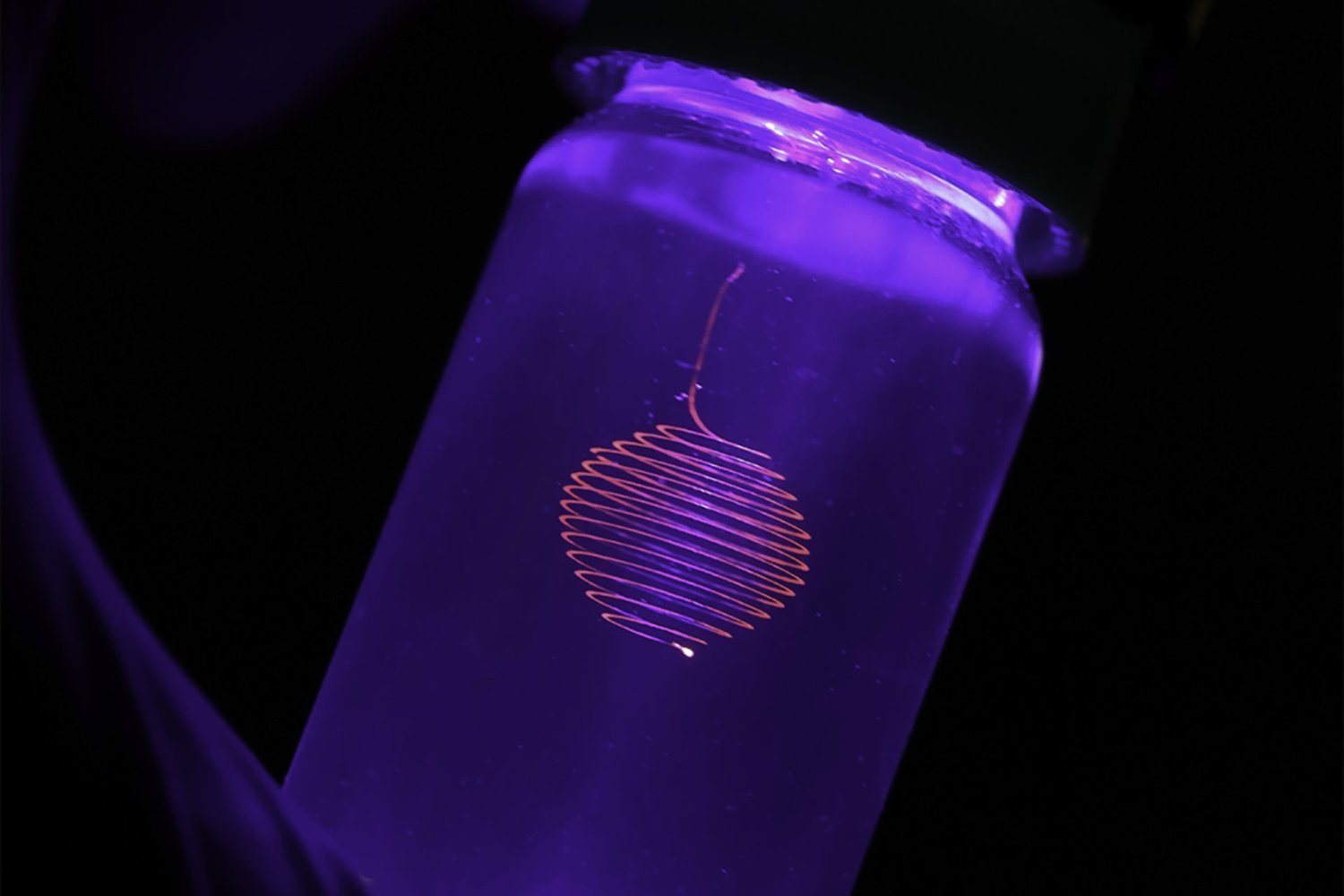

The method speeds up CO2 absorption—potentially helping the fight against climate change.

Professionals of all kinds—from artists to architects to scientists—have been drawing inspiration from nature for millennia. Now, engineers have managed to produce extremely fine fibers inspired by spider silk and hagfish slime.
A team of international researchers has used a new 3D-printing technique to create microfibers just 1.5 microns thick. As detailed in a study published January 20 in the journal Nature Communications, the researchers have successfully surpassed a long-standing limit of 3D printing capabilities: printing soft and very thin materials.
“In nature, there are many examples of filamentous structures that achieve a diameter of only a few microns,” Mohammad Tanver Hossain, an engineer at the University of Illinois Urbana-Champaign who participated in the study, said in a university statement. “We knew it had to be possible.”
Hossain and his team’s technique, called embedded printing, involved depositing material into a gel mold. In contrast to traditional 3D printing, which builds layer by layer from the ground up, embedded printing supports the material’s shape and enables more complex structures. Even with embedded 3D printing, however, hair-like structures thinner than 16 microns typically break before they can harden, a process called curing.
“We modified the gel and the print ink so that the ink would cure as soon as it gets deposited in the gel,” Hossain explained. “This prevents the filament from snapping because it’s almost instantaneously solid.” In fact, Hossain and his colleagues were able to print fibers just 1.5 microns thick. For comparison, paper is usually between 50 and 200 microns thick.
“Achieving such high printing resolution means we now have the technological foundation to mimic the microfibers and hair-like structures found in nature, which exhibit remarkable functionalities,” said Wonsik Eom, an engineer at Dankook University who also participated in the study.
Hossain, Eom, and their colleagues were inspired by the slime produced by hagfish: an eel-shaped marine creature that releases a fibrous slime to defend itself as well as to hunt prey. The slime’s incredible versatility comes from its microfibers.
“We adopted embedded 3D printing as a method to mimic these threads,” said Eom. “Through our research, we discovered that developing high-resolution embedded 3D printing technology enables us to replicate a much wider range of natural structures than we initially expected.”
“The significance of this method is to produce many geometries of hairs while not having to deal with the downward force of gravity on such fine and flexible hair,” added Sameh Tawfick, also an engineer at the University of Illinois Urbana-Champaign and a co-author of the study. “This allows us to produce complex 3D hair, having fine diameters, using an ultraprecise 3D printer.”
While the study ultimately highlights the potential of bioinspired 3D printing, it also reminds us that Mother Nature is still the greatest engineer of all.